Perk Up with 6 Tasteful Malaysian Drinks
Lighten your mood and rejuvenate your senses with 6 must-try Malaysian drinks!
Discover the authentic in Asian cuisine food

They may look ‘clumsy’ and less pretty than greens, but tubers or root vegetables such as yam, potato and turnip are awesome low-fat carb foods that pack a punch of nutrients. With the right recipe, they can add a delicious side for your dish, as a snack on its own, or even as a dessert.
However, among these earthy delights, the sweet potato is definitely the star. Originated from Central and South America since 2500 BCE, this wonder tuber had travelled across the Pacific Ocean to Polynesia, spread and cultivated around the world through maritime trade since 1500-1600 AD, with 6,500 variants recorded at the International Potato Centre in Peru to date.
In Asia, the sweet potato is a beloved snack and dessert, as well as a staple food for rural farmers in places unsuitable for growing rice. In recent years, the sweet potato has also gained more popularity in the West, featured in various healthy-eating sites including BBC Good Food.
So, what makes this potato that isn’t ‘exactly’ a potato such a hit? Let’s find out.
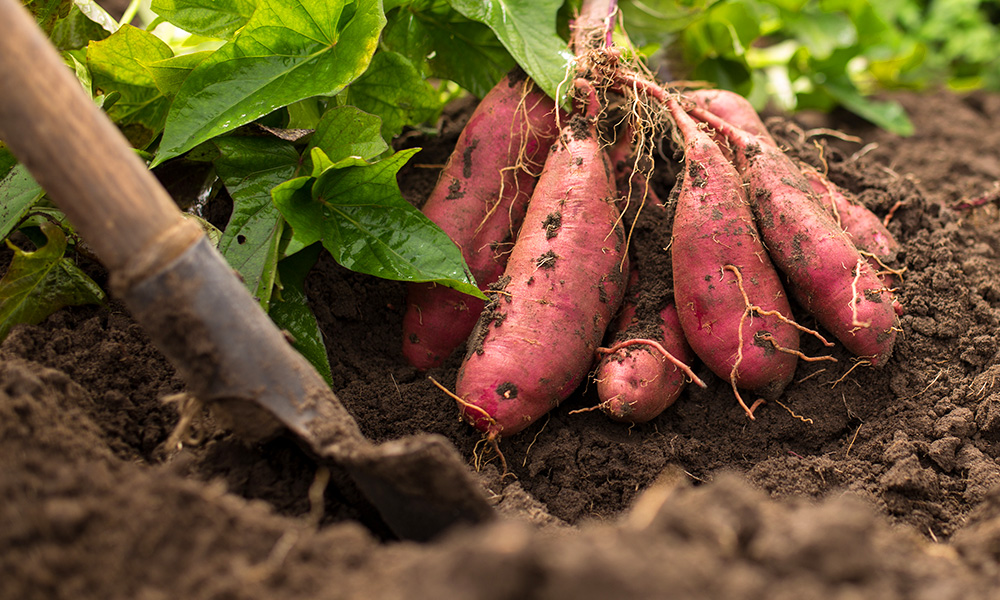
Botanically speaking, the sweet potato is a root tuber of the bindweed or morning glory family, while your non-sweet garden variety is of the nightshade family. Its shape is long and tapered, with a smooth coloured skin of yellow, orange, red, brown, purple or beige; and soft, starchy flesh of white, orange, pink or violet – depending on the variant. The leafy stem is also edible and is a common Asian stir-fry dish. You can even braise or steam them for your salad. As for the tuber itself, you can savour it raw, baked, deep-fried, stir-fried, or in a dessert soup.
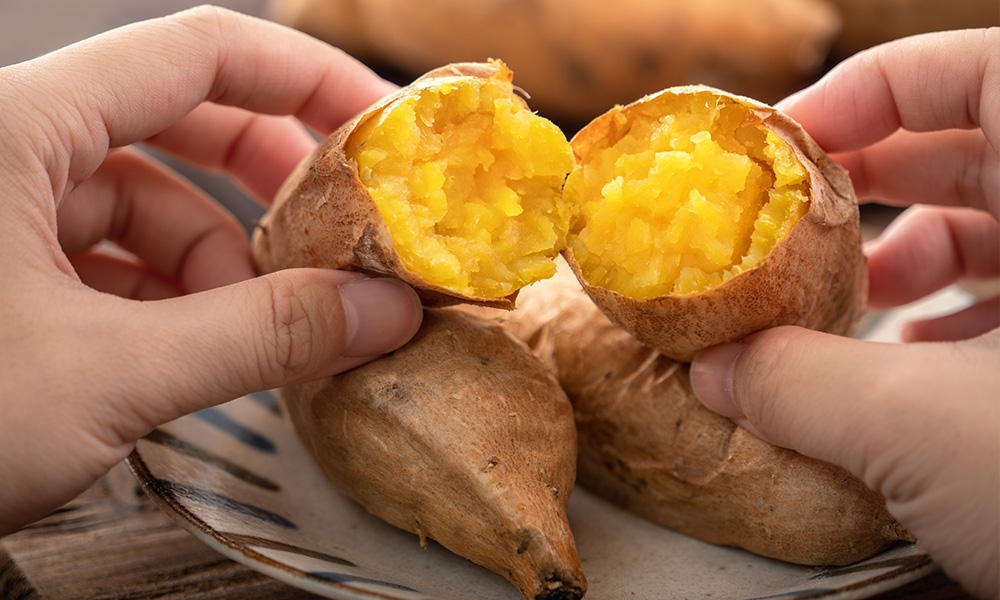
Sweet potato is rich in Vitamins A, C, and D, as well as calcium and fibre. It promotes gut health, contains cancer-preventing antioxidants, and is a great source for natural sugar.
The Satsuma-Imo, a variant of Japanese sweet potato, is a purple-skinned, Okinawan special; and is believed to have contributed to the locals’ great health and long life.
Other common types come in red-skinned with deep orange flesh, or brown-skinned with white-flesh – the latter type is usually softer and has a more ‘powdery’ mouth-feel, but contains fewer antioxidants.
If you’re vegan or on a plant-based diet, sweet potato is practically your power-food.
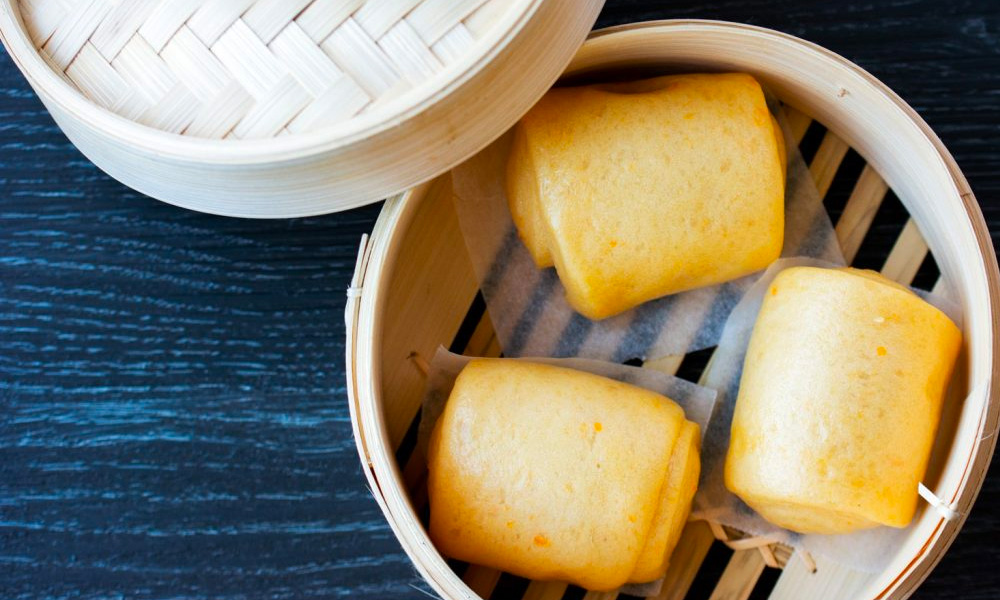
Since its introduction to the East, sweet potato has earned a special place in Asian cuisines. In China, they’re baked in large iron drums and enjoyed as a winter street food; or made into Mantou buns; while in North-eastern parts, they’re often cut in chunks and fried, served with hot syrup. Similarly, Koreans roast it during cold weathers. The Japanese have a menu of sweet potato specials, such as the baked Daigaku-imo dessert, Wagashi confections, and this magnificent salad.
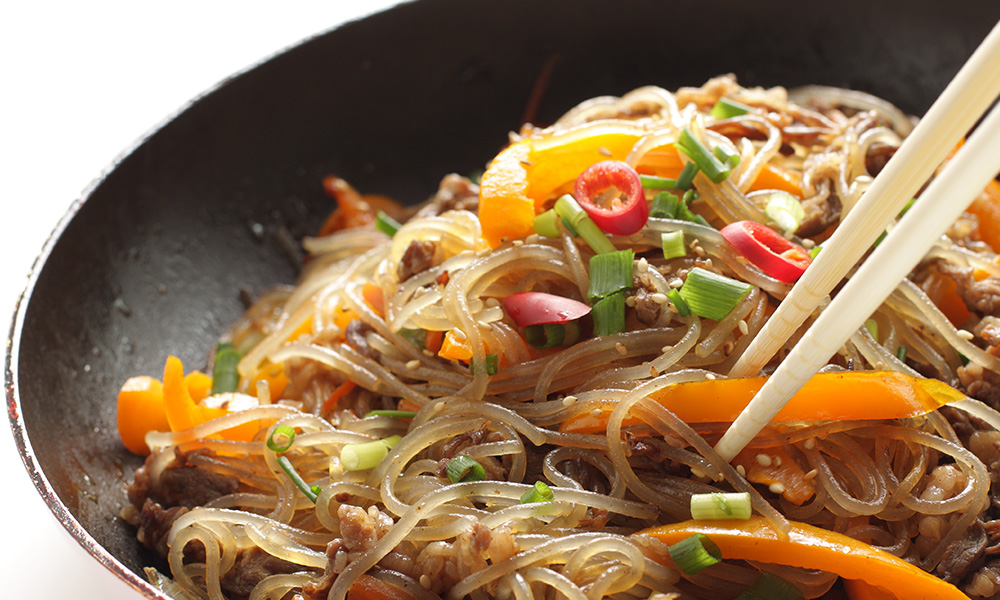
Noodles are also made from sweet potato starch. Try a yummy stir-fry Korean Japchae, or spice it up with this Sichuan delicacy.
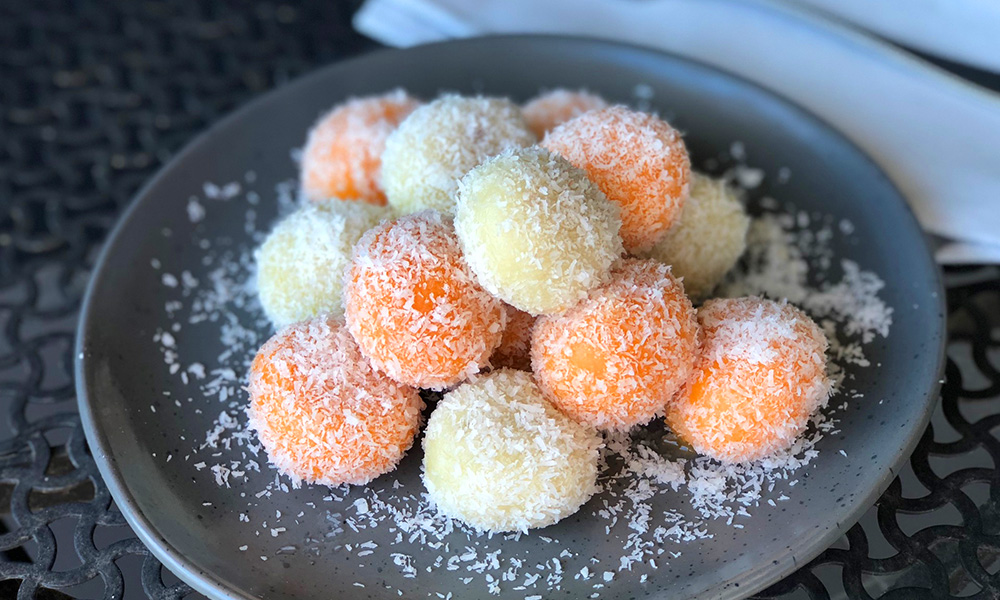
Dessert soups are also common in Asia, such as the Bubur Cha-cha, Pengat sweet broth, Es Kolak coconut milk with fruits, and the Taiwanese ginger syrup soup. Other snacks and desserts include the classic Onde-onde, the fun sweet potato balls, baked chips, deep-fried Tempura Panko and Nian Gao, as well as this amazing fritter. Feeling classy? Try this delicious award-winning modern Japanese special.

Lighten your mood and rejuvenate your senses with 6 must-try Malaysian drinks!

Pair your hearty barbecues with these refreshing Asian delights!

What are the properties of ginger, and how to pick, store and use ginger in your cooking? Find out here!